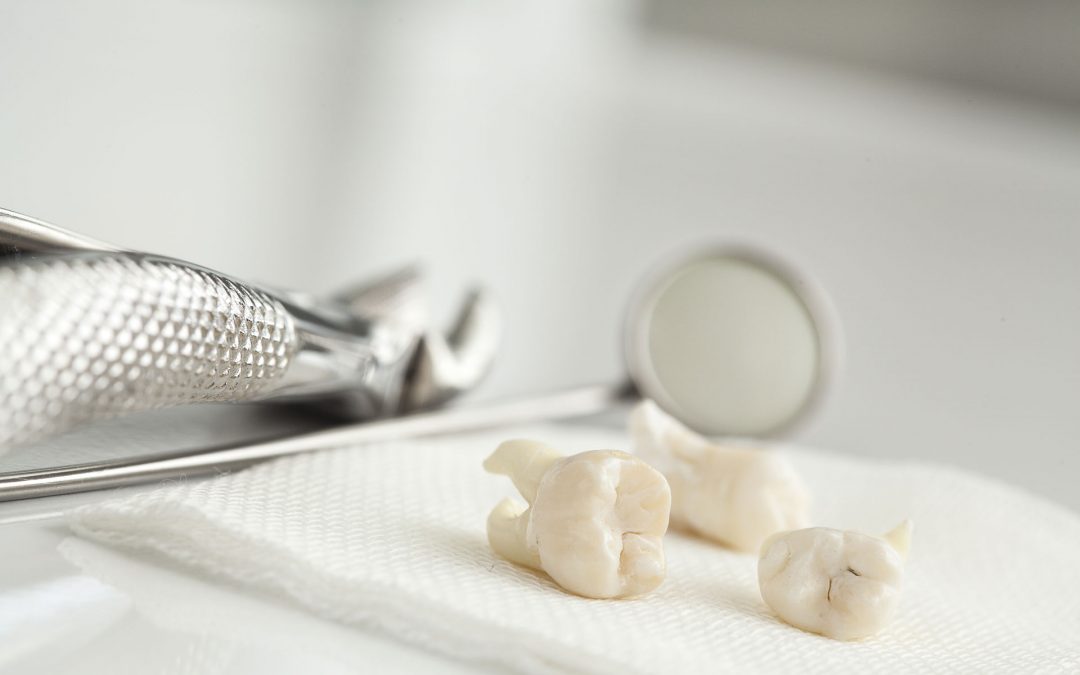Wisdom teeth are the third and final set of molars that most people get in their late teens or early twenties. Our mouth goes through many changes and the appearance of third molar i.e. wisdom tooth is a major landmark that usually takes place between the ages of 17 and 21. The term wisdom teeth is used because they come through at a more mature age. Anthropologists believe that wisdom teeth were evolution’s response to our ancestors’ early diet of rough foods such as roots, nuts, and meats that require serious chewing power. They can be very useful to the mouth when healthy and properly aligned, but more often, they are misaligned and require removal. The jawbone, adjacent teeth and nerves can be damaged by poor alignment of wisdom teeth.
Wisdom teeth can also be impacted. This means that they are implanted within the soft tissue or the jawbone or only partially rupture through the gum. Partially ruptured wisdom teeth can give bacteria a place to enter the gums and create a place for infections to occur. This may also lead to pain and swelling of the jaw. It is very easy for oral infections to enter the blood stream and affect the entire body.
Impacted wisdom teeth tend to develop cysts (pockets of fluid) around them, which can damage the tooth and neighboring tissues including bone.
Removal of Wisdom Teeth

The stage of development and the position of the wisdom tooth are factors that determine the ease at which a doctor or oral surgeon can extract them. A wisdom tooth that is fully erupted can be removed as easily as other teeth. However, incision into the gums and then removal of the portion of bone that lies over the tooth is required for wisdom tooth that is implanted in the jawbone.
During the procedure, one of these three types of anesthesia can be used and it’s dependent on the expected complexity of the wisdom tooth extraction. These anesthesias include:
1. Sedation anesthesia:
This is administered through an intravenous (IV) line in the arm. The patient won’t feel any pain and will have little memory of the procedure. The patient might sleep during the procedure and will also receive local anesthesia to numb the gum during the whole procedure.
2. Local anesthesia:
This anesthesia is administered near the site of the extraction. It numbs the gum. The patient remains sedated through the extraction of the tooth.
3. General anesthesia:
The patient will either get drugs through a vein or breathe gas in through a mask. The patient will be asleep the whole time and might not wake up for an hour or so after the surgery.
In the procedure, the doctor makes a cut in the gum to expose the tooth and the bone. He removes the bone that blocks the tooth, removes the tooth and cleans the site of the removed tooth of any debris from the tooth or bone. After cleaning the site then he’ll stitch the wounds so they heal quickly. To soak up blood he may also stuff gauze pads in the mouth of his patient.
After the procedure the patient is taken to the recovery room if sedation anesthesia or general anesthesia was given.
Things that should be done after the extraction are:
Gently open and close your mouth to exercise your jaw.
Take the drugs prescribed by the doctor to reduce pain or swelling.
Eat soft foods.
Brushing should be started on the second day and avoid brushing against any blood clot
Visit the doctor if the pain or swelling doesn’t improve.
Things to avoid after extraction include:
Avoid eating hard, crunchy, or sticky foods that may scratch your wounds.
Avoid smoke. Smoking slows down healing.
Avoid drinking through a straw. Sucking may loosen blood clots.
Make an Appointment Today!
NoFrills Dental @ Marina Square
6 Raffles Boulevard,
Marina Square,
#B1-11
Singapore 039594
T: +65 6227 8885
E: marinasquare@nofrillsdental.com.sg
NoFrills Dental @ Suntec City
3 Temasek Boulevard
Suntec City (North Wing)
#03-317
Singapore 038983
Call Us Today
+65 9007 1085


































